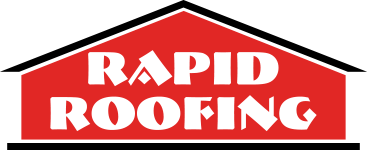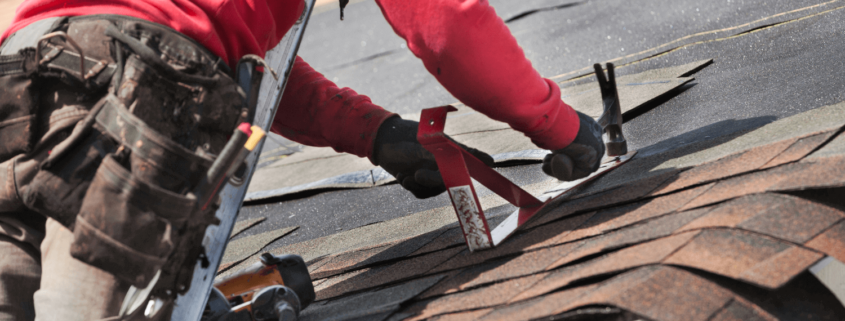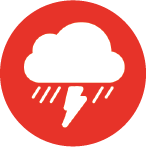Essential Roof Repair Guide: How to Repair a Roof with Confidence
Tackling roof repairs can be straightforward with the right guidance. Our comprehensive “roof repair guide how to repair a roof” delivers crucial insights, ensuring you handle common roofing issues with confidence. From identifying damage to applying the correct repair solutions, this guide equips you with the knowledge to protect your home from the top down.
Key Takeaways
-
Early detection of roof damage, such as broken or missing shingles and water damage signs, is critical to prevent further deterioration and potential structural issues, warranting immediate repairs or a complete roof replacement based on severity.
-
Safety precautions and using the correct equipment, including fall protection gear and roofing tools, are imperative during roof repair processes, with emergency measures like using tarps and buckets to mitigate damage until professional repairs can be executed.
-
Regular roof inspections and maintenance are essential in extending the roof’s lifespan and preventing major issues; professional roofing services, such as those offered by Rapid Roofing, include comprehensive evaluations and are crucial in transitioning from temporary to permanent repairs.
Understanding Roof Damage and Repair Necessity
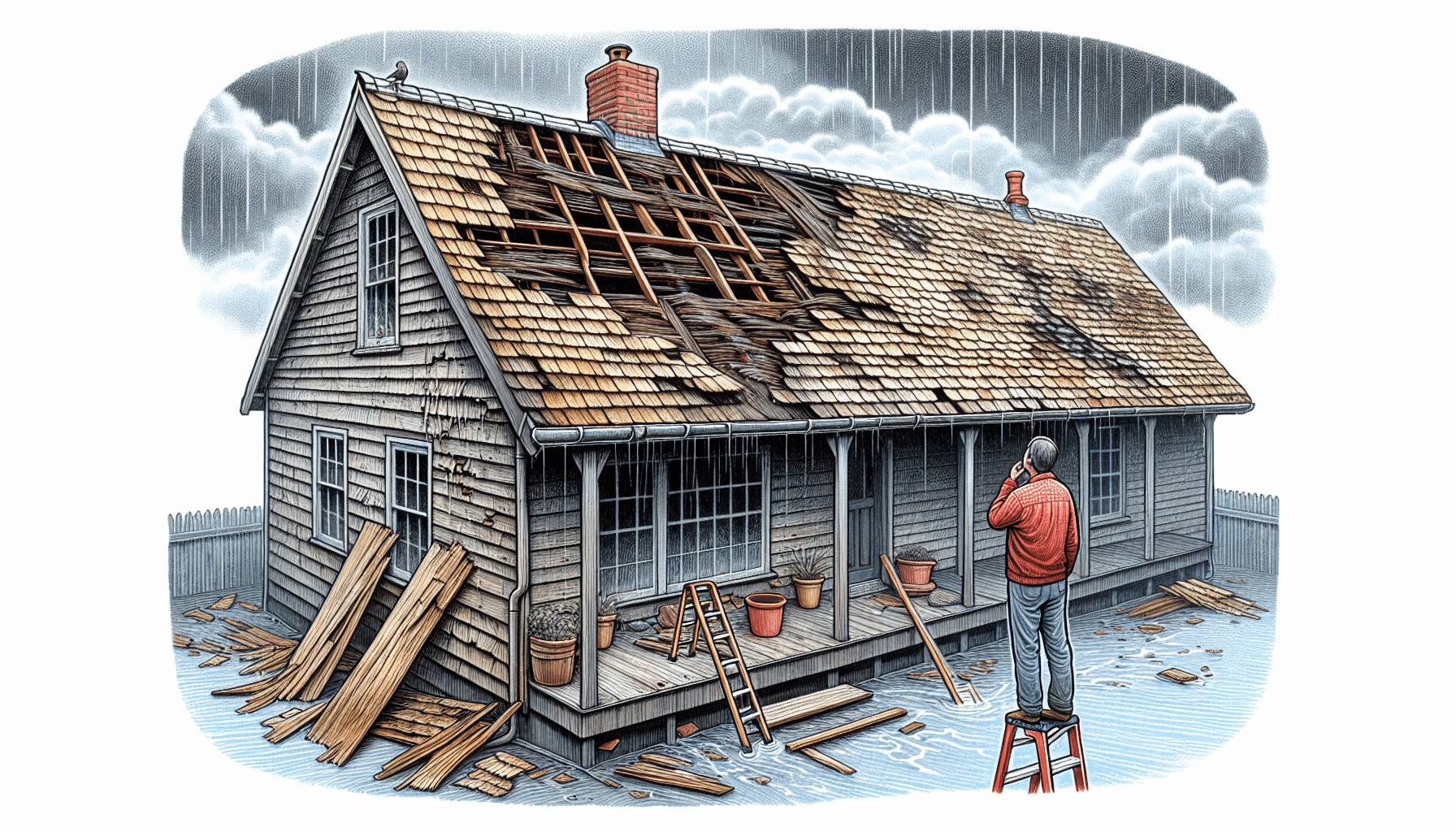
Your roof plays a significant role in protecting your home from weather damage and ensuring your family’s safety. But just like any other part of your home, it’s susceptible to wear and tear. Detecting signs of roof damage early can prevent further deterioration and potential structural issues.
So, what are the common signs of roof wear that you should look out for?
Identifying Common Signs of Roof Wear
Some clear indicators that your roof requires attention include:
-
Broken, cracked, or curling shingles
-
Dark streaks or spots and black algae streaks on the roof, which often signal underlying issues like algae growth
-
The absence of shingles and water damage on interior walls or ceilings, which are telling signs of a compromised roof structure that may require immediate repair actions.
Severe structural compromise signs include sagging or warping of the roof structure, U or V-shaped water stains, and detection of leaks in the attic around roof fixtures.
Assessing the Extent of Roof Damage
Once you identify these signs, it’s time to assess the extent of the roof damage. Dark streaks or spots, and extensive moss or algae growth on the roof, can be early indicators of potential leaks or water damage. Interior water stains shaped like U or V can be a visual cue to the severity of the damage and the need for urgent repair to avert structural issues.
Determining whether roof damage is aesthetic or structural is imperative for deciding on repairs or a full replacement for home safety. Signs of extensive storm damage such as widespread shingle loss or visible structural compromise indicate the need for immediate attention. Severe storm damage might necessitate roof replacement, whereas replacement might be more cost-effective when a significant portion of the roof is damaged or near the end of its lifespan.
When to Seek Professional Assistance
While it’s important to understand and identify roof damage, there are times when professional intervention is crucial. When the roof deck shows signs of sagging, warping, or other structural damage, it’s time to call a professional roofer. Specialized knowledge from roofing professionals is necessary to accurately diagnose and treat hard-to-detect problems, such as hidden damage or the full extent of shingle damage not visible from the ground.
Professional roofers should also be contacted for damage from neglect or extreme events—terms like wind damage or a tree fall—due to the potential complexity of such issues, which may affect the entire roof.
Preparing for Roof Repair
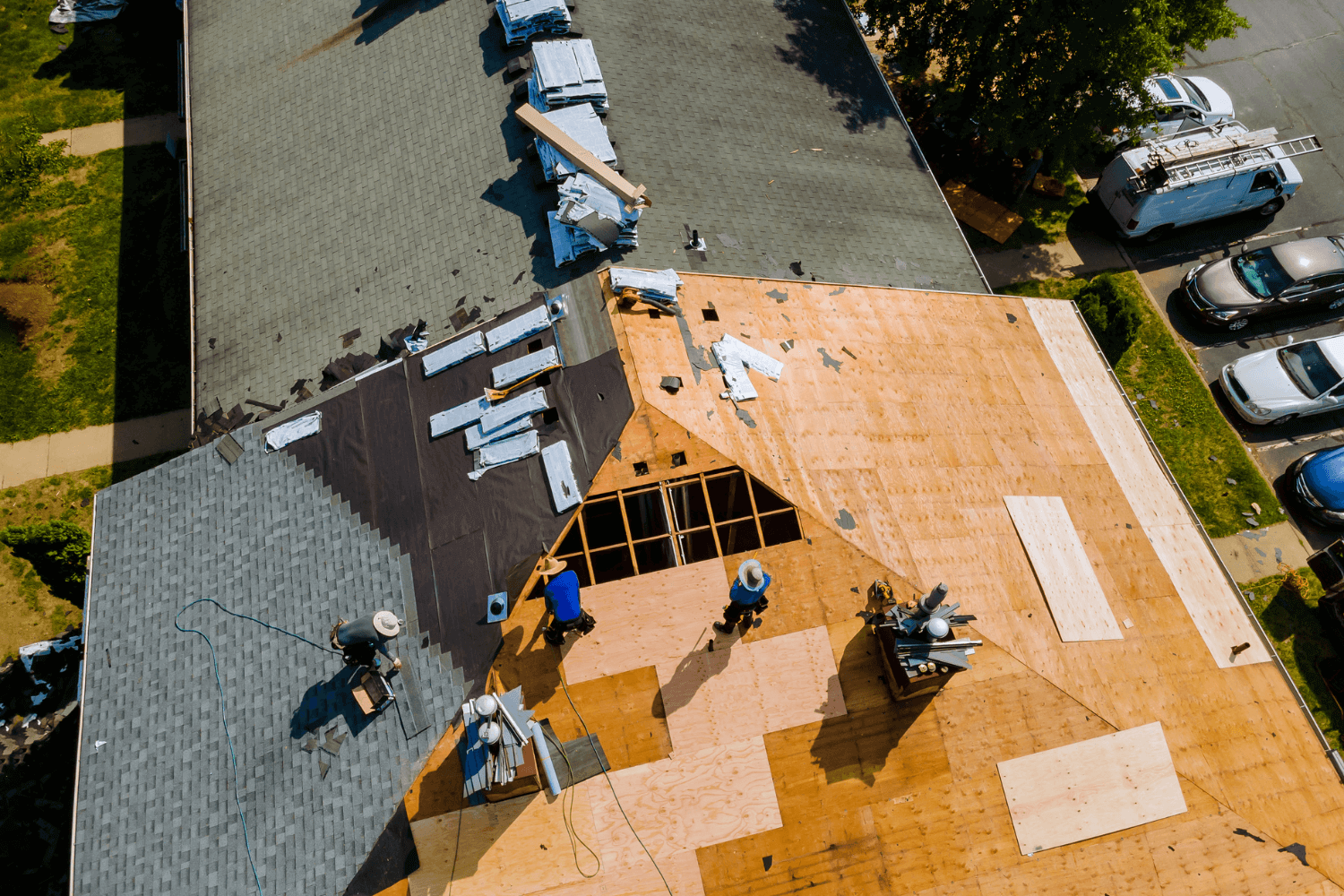
Now that you understand the signs of roof damage and when to seek professional help, it’s time to prepare for roof repair. This involves ensuring safety, gathering necessary equipment, and protecting your property.
Safety First: Necessary Equipment and Precautions
Before the repair works get underway, safety should be your first priority. Workers should be equipped with:
-
Non-slip footwear
-
Hard hats
-
Gloves
-
Eye protection
-
Hearing protection
-
Respiratory protection
-
Suitable wet weather gear when engaged in roofing work
Use safety harnesses and fall protection gear to prevent falls, the leading cause of death in construction, and install guardrails as a barrier against such accidents.
In emergency roof repair situations, adhere strictly to safety protocols by using appropriate protective devices to prevent falls or injuries.
Gathering Materials and Tools
Next, gather all the necessary materials and tools. For asphalt shingle roof repair, you will need:
-
Roofing nail guns
-
Hammer tacker staplers
-
Roofing hammers or hatchets
-
A caulking gun for precise application of roofing cement
-
Roofing blades or utility knives for cutting various materials, including asphalt shingles
-
Scoop shovels, roofing shovels, or pry bars for moving and removing old shingles during a tear-off
-
A ladder hoist or boom truck for safely lifting shingles to roof height.
Chalk line tools and measuring tapes or laser tools are essential for precise shingle alignment and measurement.
Step-by-Step Roof Repair Techniques
Armed with all the necessary equipment, let’s dive into the step-by-step roof repair techniques. These will guide you on how to fix minor roof leaks, replace missing or damaged shingles, and address emergency situations.
Fixing Minor Roof Leaks
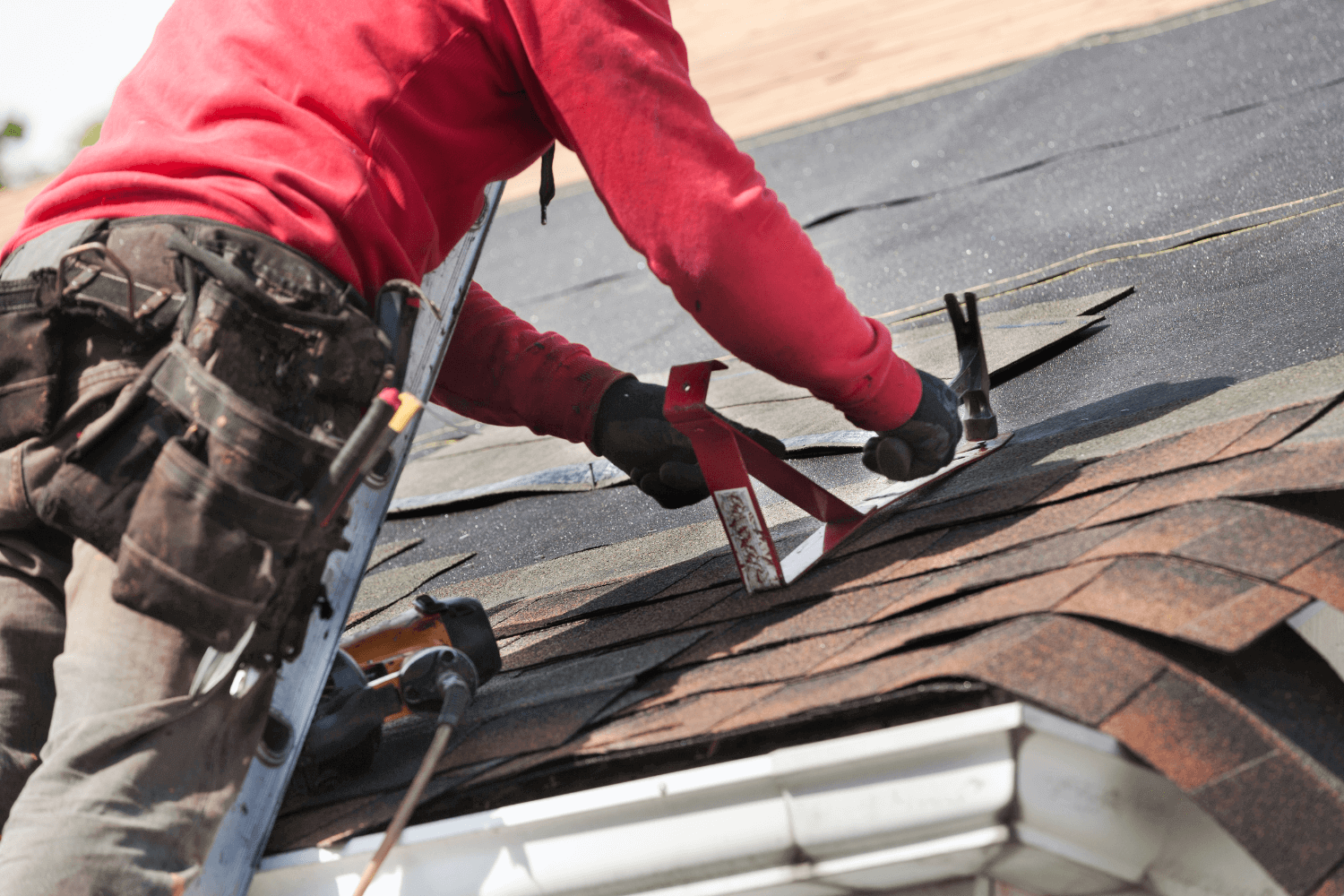
Minor roof leaks can be a nuisance, but they can be fixed temporarily until a professional is able to perform permanent solutions. For minor leaks, temporary measures should employ sealants. Identifying the exact locations of leaks, especially near vents, chimneys, or skylights, is necessary to correctly apply temporary repairs.
Replacing Missing or Damaged Shingles
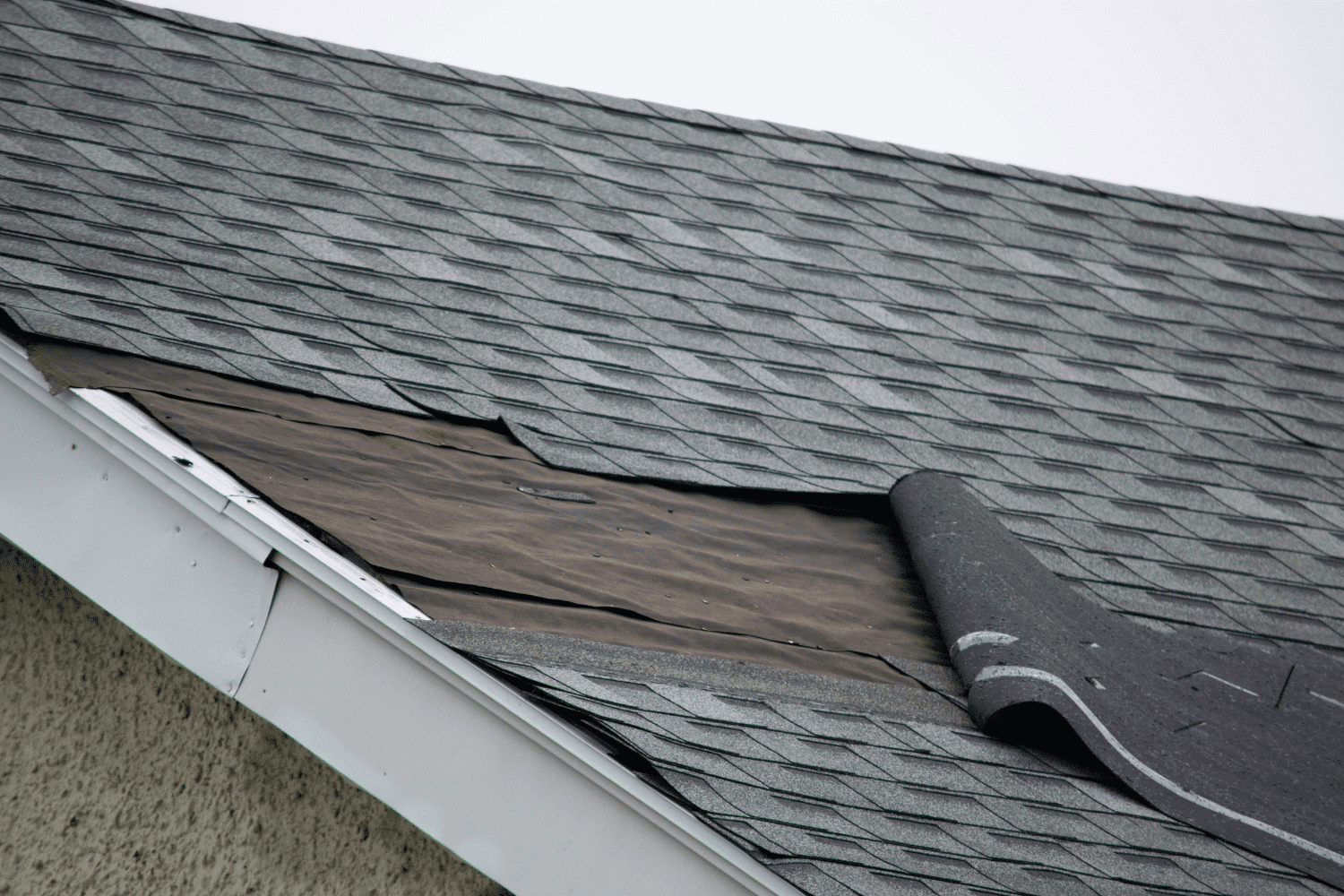
Missing or damaged shingles are a common issue that homeowners face, including loose shingles. Before replacing shingles, identify areas with wind damage, which may cause underlying wood to swell or rot, indicating urgent roof repair needs, and then remove the shingles around the damaged area with a flat pry bar.
If the roof deck is damaged, follow these steps to repair it:
-
Remove the shingles above the affected area.
-
Cut out the damaged deck section on the rafters.
-
Install a new patch of roof deck and nail it into place.
-
Lay down new roofing paper or underlayment over the repaired deck, with each row overlapping by at least 4 inches.
-
Start laying new shingles from the bottom row.
Addressing Emergency Situations
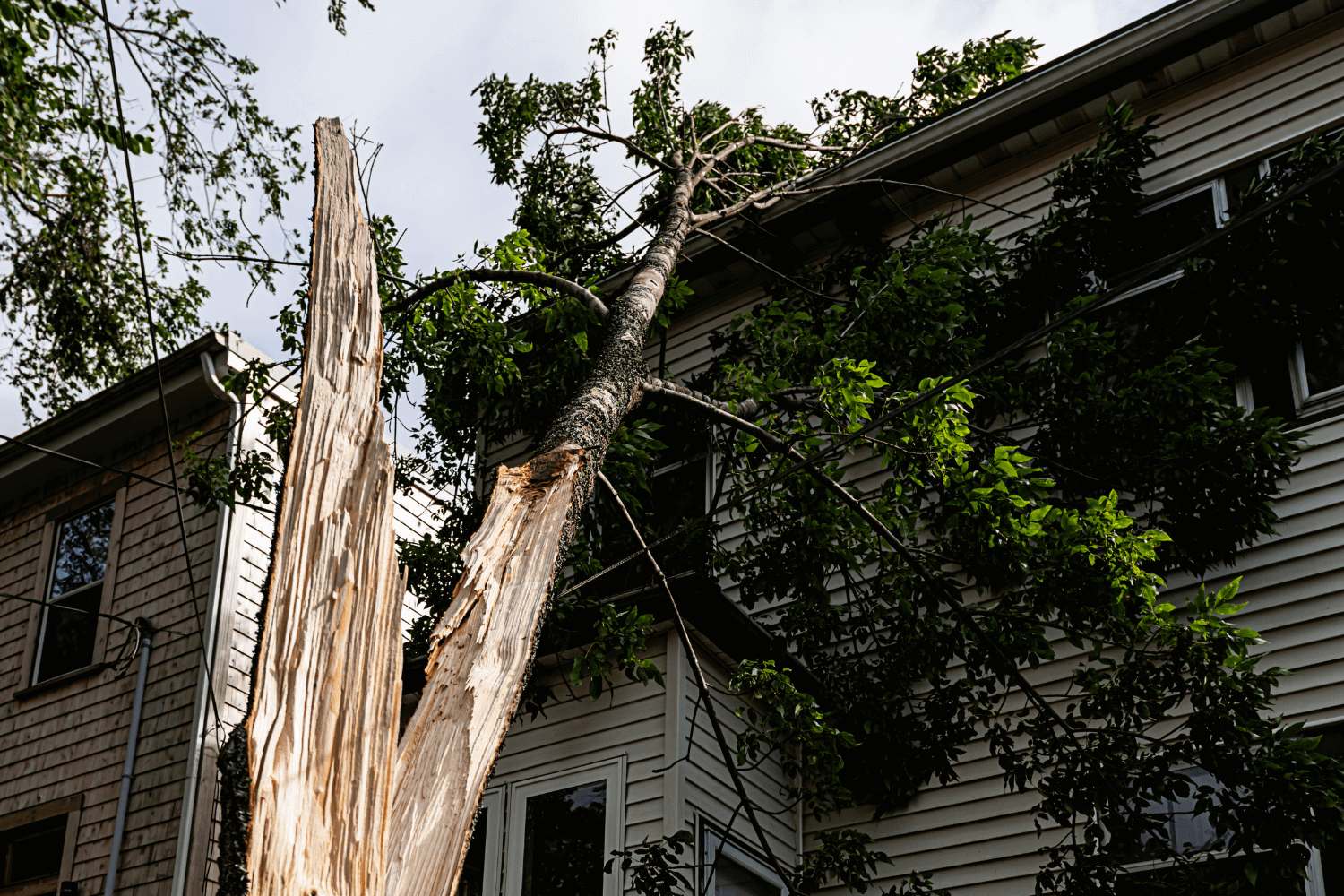
In emergency situations, it’s important to act quickly to prevent further damage to your home. During heavy rain or storm damage, use tarps to protect exposed sections of the roof from further damage.
If a leaking roof occurs during rain, place buckets to catch drips from the roof leak and use plastic sheets to protect furniture and electronics from water.
Ensuring Longevity: Permanent Repairs and Maintenance
While temporary fixes are important, the ultimate goal is to ensure the longevity of your roof through permanent repairs and regular maintenance. Regular maintenance is crucial in preventing minor roof damage from escalating into serious problems that could lead to expensive repairs or the need for a complete roof replacement.
Transitioning from Temporary to Permanent Repairs
Transitioning from temporary emergency roof repair to permanent repairs can be a challenge, but it’s a crucial step to maintain the long-term integrity of your roof. When deciding whether to repair or replace your roof, consider the extent of the damage and the overall condition of the roofing materials.
A roofing professional can effectively carry out permanent repairs, ensuring the roof is restored to a safe and functional state.
The Role of Regular Inspections and Maintenance
Aside from repairs, regular inspections and maintenance also play a crucial role in maintaining your roof’s health. Regular roof inspections are vital, especially in areas with harsh weather, to detect issues like shingle loss or damaged flashings which are primary causes for roof leaks. Staying proactive with roof inspections and addressing minor repairs quickly can protect the roof from damage caused by water, wind, snow, sun, and ice.
Rapid Roofing’s Expert Approach to Roof Repairs
Rapid Roofing, a residential roofing contractor in Michigan and the northwest Ohio region, including Toledo, specializes in roof replacement, storm damage repair, and siding installation. The company holds an A+ BBB accreditation, reflecting its dedication to quality and customer satisfaction, and offers comprehensive roofing solutions, backed by a warranty from a GAF MasterElite contractor.
Innovative Roofing Technologies and Materials
Rapid Roofing offers the following services:
-
Virtual inspections
-
Contactless experiences
-
Comprehensive roof evaluations
-
Detailed analysis of the roof, attic, and crawlspace for any unseen issues
The company is recognized for its expertise in low slope and metal roofing.
Siding Installation and Exterior Services
Aside from the roof, other parts of your home’s exterior, like the siding and gutters, also play crucial roles in protecting your home. Rapid Roofing offers an array of services beyond just roofing, extending to skylight and gutter installations as well as James Hardie siding and roofing materials.
Importance of Siding and Gutter Health
Leaky or clogged gutters can indicate underlying roof issues that may eventually require significant repair or replacement. Granules collected at the base of downspouts or inside gutters are a telltale sign that a roof is losing its protective layer, signifying a potential need for roof maintenance or replacement.
Properly installed and maintained siding not only enhances a home’s curb appeal and value but also contributes to energy efficiency and insulation.
Integrating Roof and Exterior Service Solutions
Rapid Roofing includes gutter maintenance as an integral part of their broader home maintenance routine, ensuring professional evaluations and repairs of roofing, siding, and gutter systems for comprehensive home protection. For cleaning gutters, Rapid Roofing employs specialized equipment capable of reaching up to three stories high, which negates the use of ladders that might harm the home’s siding.
To further minimize the need for frequent maintenance, gutter guards or covers are installed to keep out debris while allowing unobstructed water flow.
In conclusion, maintaining your roof is crucial in protecting your home from weather damage and ensuring your family’s safety. Regular inspections, timely repairs, and regular maintenance can prevent minor issues from escalating into serious problems. By understanding the signs of roof damage, preparing for roof repair, and applying the right repair techniques, you can prolong your roof’s lifespan and maintain its integrity. And remember, when in doubt, it’s always best to seek help from a professional roofer.
Frequently Asked Questions
Is it better to repair a roof or replace it?
If the cost of repair is close to the cost of replacement, it may be better to opt for a new roof altogether. Additionally, as roofs age, they become more susceptible to further damage, making repairs a temporary solution.
How do you fix rotted plywood on a roof?
To fix rotted plywood on a roof, start by estimating the extent of the damage and removing the roofing. Then, cut out the rotted wood, measure the area, cut the replacement decking to fit, position the replacement, and secure the decking in place. This process is part of roof replacement and can only be performed once the old shingles are removed.
Can I repair the roof myself?
Yes, you can repair the roof yourself, but you should obtain a permit from your local building department for safety and legal reasons.
What are the signs of roof wear that I should look out for?
Look out for broken, cracked, or curling shingles, dark streaks or spots on the roof, and the absence of shingles as signs of roof wear. These indicators can help you identify potential issues with your roof.
When should I call a professional roofer?
You should call a professional roofer when you notice signs of structural damage, such as sagging or warping, or in cases of damage from neglect, extreme weather events, or a tree fall. It’s important to seek professional help in these situations to ensure the safety and integrity of your roof.
